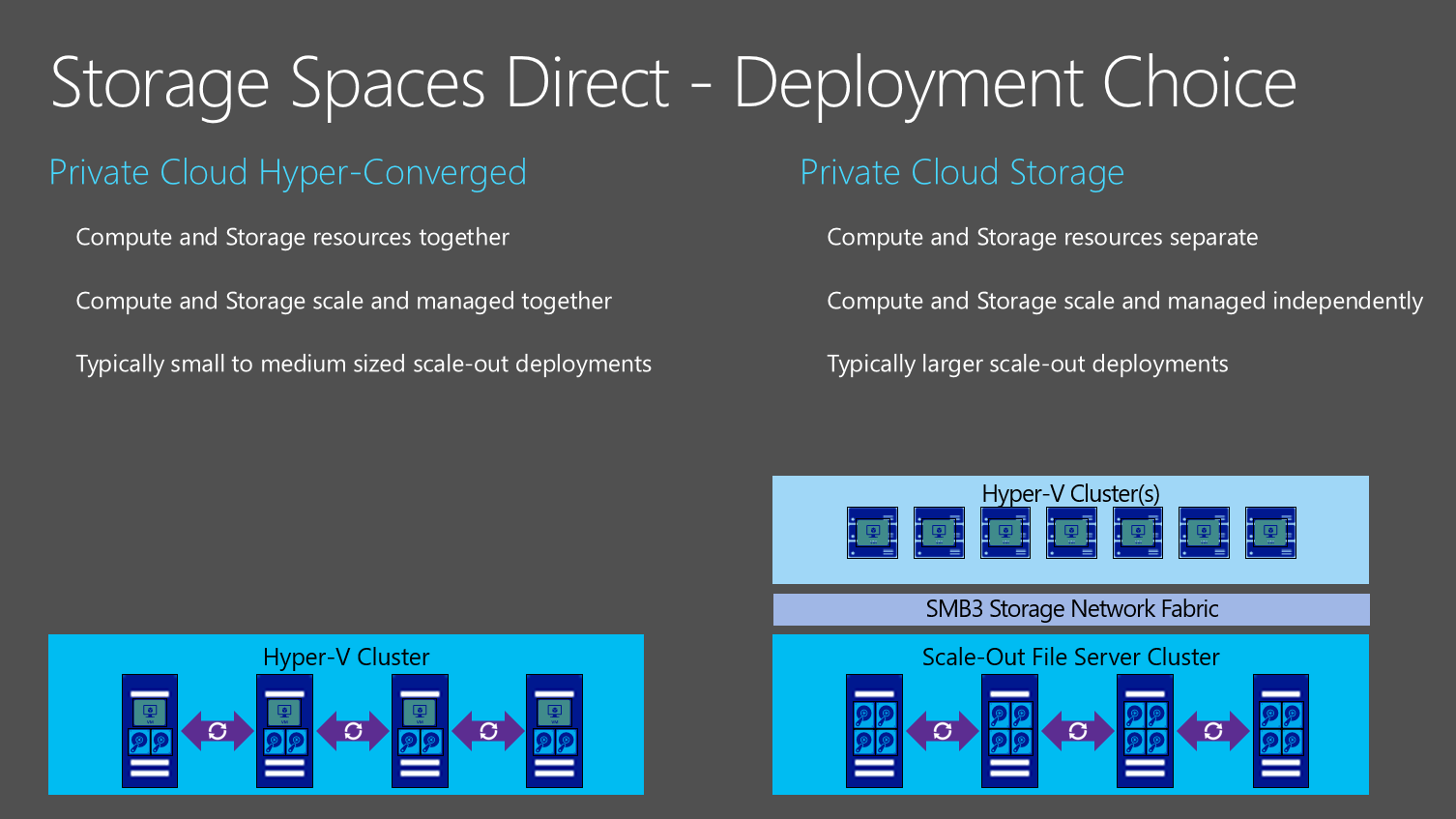Software defined networking in windows server 2016.
Windows server 2016 hyper converged networking.
With s2d you will be able to create a hyper converged private cloud.
Windows server 2016 hyper v includes some powerful new networking technologies and features that are found in windows server 2016.
The final leg of hci on windows server 2016 is the ability to integrate networking between compute and storage systems.
For example windows server 2012 introduced support for converged networking.
The converged networking functionality with windows server 2016 is one of those powerful new features that enables much more efficient and logical management of network traffic for hyper v administrators.
To manage your cluster as hyper converged infrastructure in windows admin center it needs to be running windows server 2016 or windows server 2019 and have hyper v and storage spaces direct enabled.
Because you need less network adapters this design reduces the cost of the solution.
Optionally it can also have software defined networking enabled and managed through windows admin center.
In addition microsoft has announced that windows server 2016 supports now a 2 node hyperconverged cluster configuration.
With windows server 2016 the network convergence is easier to deploy than with windows server 2012r2.
Windows server 2016 networking part 3 optimizing network settings july 13 2017 may 6 2019 darryl azure stack hci in the previous parts we ve configured our network infrastructure with dcb and set qos policies to ensure traffic bandwidth.
The second part of this document shows an example of this implementation.
First published on msdn on sep 08 2015 one of the big hot features in windows server 2016 which has me really excited is storage spaces direct s2d.
A hyper converged infrastructure hci consolidates compute and storage into.
Network convergence brings you flexibility simplicity a better cable management and quick deployment.
I can now publish the setup of my lab configuration which is almost a production platform.
This lets you route network traffic through one external virtual switch.

